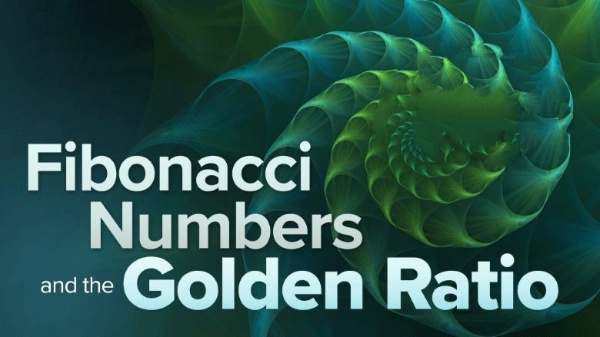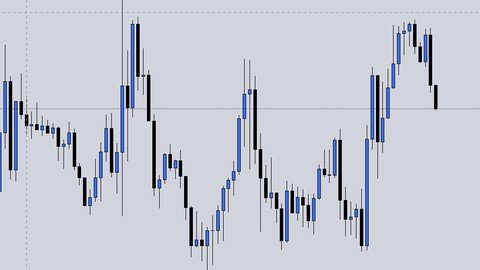
TTC - Fibonacci Numbers and the Golden Ratio
Posted on 02 May 04:21 | by BaDshaH | 3 views

Released 4/2024
MP4 | Video: h264, 1280x720 | Audio: AAC, 44.1 KHz, 2 Ch
Genre: eLearning | Language: English | Duration: 12 Lessons ( 5h 32m ) | Size: 3.42 GB
In 1202, an Italian mathematician and avid traveler named Fibonacci introduced an ingenious system of numbers that was vastly superior to the traditional Roman numerals then in use in Europe
In 1202, an Italian mathematician and avid traveler named Fibonacci introduced an ingenious system of numbers that was vastly superior to the traditional Roman numerals then in use in Europe. Showing off the Hindu-Arabic system, which is based on 10 digits from zero to nine, he worked out various mathematical problems. One mathematical idea led to an intriguing sequence: 0, 1, 1, 2, 3, 5, 8, 13, 21, and so on, where each number is the sum of the two previous numbers. Little did he suspect how powerful this "Fibonacci sequence" would be, with connections to many areas of nature and mathematics, including
"She Loves Me.": The number of petals on a flower tends to be a Fibonacci number. Lilies and irises: 3 petals. Buttercups, larkspurs, and columbines: 5 petals. Corn marigolds and black-eyed Susans: 13 petals. Some asters: 21 petals. Some daisies: 34, 55, or 89 petals. All Fibonacci numbers.
Euclid's Algorithm: Although the Greek mathematician Euclid long predated Fibonacci, his method for finding the greatest common divisor of two numbers has a fascinating connection to the Fibonacci sequence, where any two consecutive numbers always have a greatest common divisor of 1.
Golden Ratio: If you work your way through the Fibonacci sequence, taking the ratio of successive numbers, you get closer and closer to a value called phi, which is approximately 1.61803.... Not only does it show up in nature, but shapes with these proportions are aesthetically pleasing to the human eye.
These two related phenomena—the Fibonacci sequence and the golden ratio—appear in almost every branch of mathematics: geometry, calculus, linear algebra, discrete mathematics, number theory, and probability, among others. Yet it takes little prior knowledge to generate and play with them, providing an endlessly entertaining way to experience a wide range of mathematical ideas.
Fibonacci Numbers and the Golden Ratio is your introduction to this compelling subject, taught by award-winning educator and "mathemagician" Professor Arthur T. Benjamin of Harvey Mudd College. In 12 engaging and insightful lectures, he presents proofs, puzzles, magic tricks, games, and more, all centered on the deceptively simple Fibonacci sequence and the equally elementary golden ratio.
It All Started with Two Rabbits
The problem that led Fibonacci to his famous sequence involved a pair of rabbits (male and female) and how their numbers accumulate under the following conditions. The rabbits take one month to mature, after which they produce another pair (male and female) and continue to do so every month. Their offspring have the same mating habits—one month to mature, then a male and female pair every month, thereafter. No rabbits ever die. How many pairs will there be after one month, two months, three months, and so on?
The answer is simplicity itself. The total number of pairs in any given month is the sum of the two preceding months: 0, 1, 1, 2, 3, 5, 8, 13, 21, 34, 55, 89, 144.. Voilà, the Fibonacci numbers!
Fibonacci himself was less interested in population growth than in the repeated application of a rule and the pattern that emerges. His pattern turned out to be very productive indeed, with connections that have multiplied like rabbits ever since
Pascal's Triangle: With deep connections to Fibonacci numbers, Pascal's triangle is constructed by creating a triangle of numbers with 1 at the apex, and each row beneath composed of numbers that are the sum of the two directly above. Empty spaces are counted as 0.
Zeckendorf's Theorem: Every positive integer can be uniquely represented as the sum of nonconsecutive Fibonacci numbers. For example, 100 = 89 + 8 + 3, with everything to the right of the equal sign a Fibonacci number. The efficient way to do this is by means of a so-called "greedy" algorithm.
Binet Formula: Suppose you want to know the one-millionth Fibonacci number, or any other value in the sequence? Jacques Philippe Marie Binet wrote a formula using the golden ratio that allows you to easily calculate the answer without having to compute every previous number.
The Irrational Golden Ratio
The golden ratio, or phi, is just as ubiquitous as the Fibonacci sequence. Phi is an irrational number (meaning it can't be expressed as a fraction of two integers), and it can be produced independently by a wide variety of formulas across different areas of mathematics. It most famously appears as the ratio of the sides of a rectangle that is widely regarded as the most visually pleasing of all quadrilaterals. This subjective aspect makes phi renowned among non-mathematicians, including artists, architects, best-selling novelists, and even financiers. Professor Benjamin discusses where some of these enthusiasts go overboard in seeing phi where it probably isn't. He also goes deeply into genuine phenomena involving phi, such as
Sunflower Spirals: Evolution has hit on the most efficient way to pack seeds onto a sunflower. As seeds grow one at a time from the center of the flower, they are pushed aside at an angle related to phi, resulting in a series of tightly spaced spirals.
Foliage: Plants love phi—the most irrational of irrational numbers—since leaves have maximum exposure to sunlight if they don't sprout at regular intervals on a stalk. By contrast, if they repeat at whole number fractions, they stack atop each other.
Kepler's Triangle: Astronomer Johannes Kepler was obsessed with the golden ratio and the Pythagorean theorem (which governs right triangles). He showed that it's possible to construct a right triangle in which two sides are in a simple relation to phi.
Throughout Fibonacci Numbers and the Golden Ratio, Professor Benjamin guides you through the logical steps that lead to remarkable insights about these numbers. "I don't want to just present you with amazing facts; I want you to actually appreciate the reasons behind these amazing patterns," he says.
Luckily, he has an infectious enthusiasm for proofs, which are the cornerstone of mathematics, without which the elaborate structure of the discipline would collapse. "Why do these numbers have all of the amazing properties we have seen, and why do they appear so often in nature?" he asks. To get to the answers, he provides the conceptual tools that "allow us to prove, beyond a shadow of a doubt, that the patterns that we have seen through just a handful of examples, will be true forever.
"And I assure you," Professor Benjamin beams, "that when the lightbulb goes on and everything makes sense, it is an amazing feeling!"
What Will You Learn?
Learn how to generate an infinite sequence of Fibonacci numbers
Discover the secret of the golden ratio and how it leads to the golden rectangle
Examine a wealth of mathematical ideas related to the Fibonacci sequence and the golden ratio
See how evolution hit on the Fibonacci sequence and golden ratio to generate efficient patterns in groups of seeds, leaves, and flower petals
Explore the use of Fibonacci numbers and the golden ratio in fiction, art, architecture, music, and other cultural realms
Investigate some dubious claims for Fibonacci and golden ratio patterns in notable buildings and artworks
Homepage
https://www.thegreatcourses.com/courses/fibonacci-numbers-and-the-golden-ratio
https://rapidgator.net/file/8e6d694bda1798a376a4fbddadea2a56
https://rapidgator.net/file/e14bea9a1c742eba60262e17d7bf2dc2
https://rapidgator.net/file/9ae47c049d864f54409a9451557c04de
https://rapidgator.net/file/178e4820b18570d19273782f7fec2a64
https://ddownload.com/qb1djtb96oqw
https://ddownload.com/5nptxs9yoqko
https://ddownload.com/upqz4ni4548n
https://ddownload.com/otgzxlqlmyu6
Related News
System Comment
Information
 Users of Visitor are not allowed to comment this publication.
Users of Visitor are not allowed to comment this publication.
Facebook Comment
Member Area
Top News



